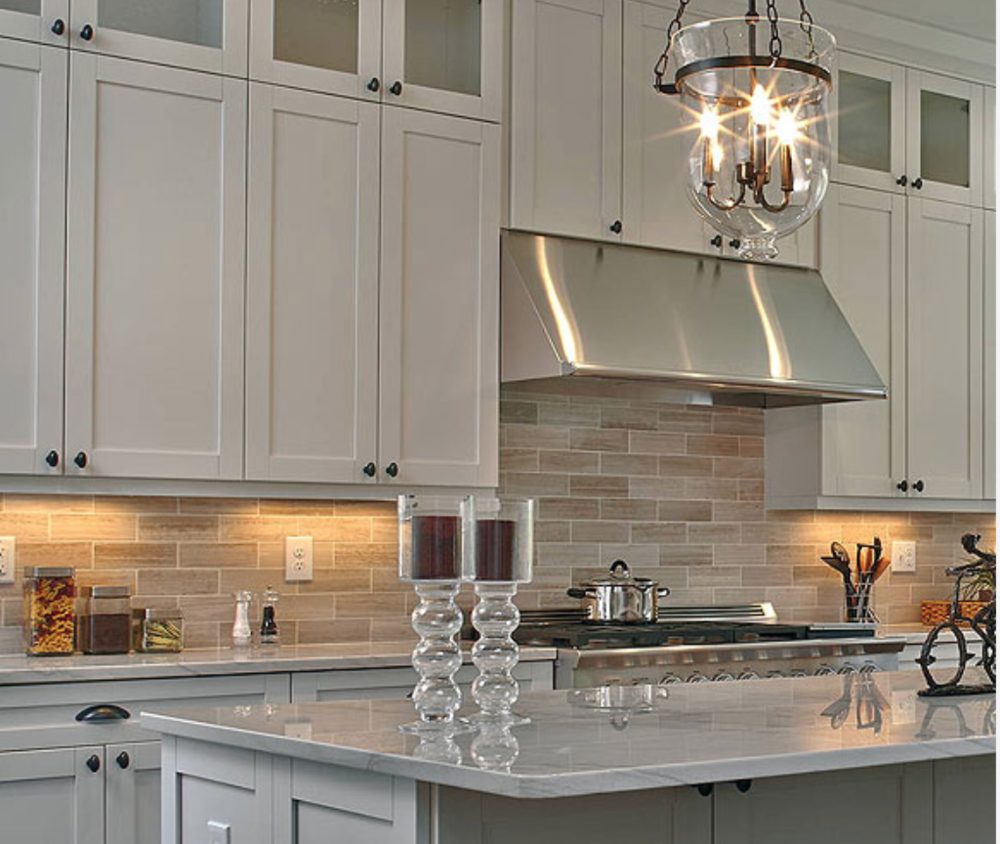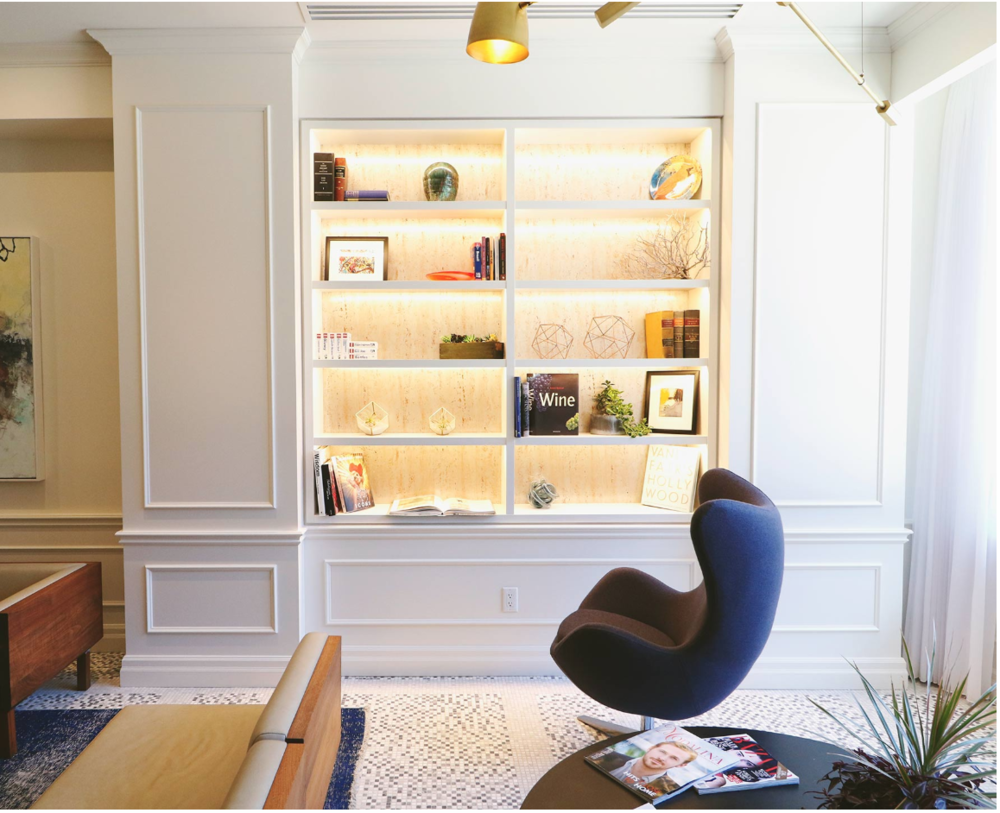
How Create Ambiance With Lighting
When it comes to creating layered lighting in your home, you can easily get overwhelmed with information. Like so many parts of home design, there is a lot of information about room lights. Let’s break it down to the essential information of the why and what to get you started.
Why do you need to layer lighting?
For two main reasons: function and atmosphere. Some lighting allows you to see everything you need to see and some lighting sets a mood. You need both. Interior designers are always focused on layering to make a place interesting and personal – textures, colors, materials, etc. Lighting is used this way also. It can be functional or practical or decorative and can change a daytime working area into an entertaining spot at night and then into your favorite reading nook later.
There are three main types of lighting: ambient, accent and task. Knowing how they work together is the key to a successful lightscape (it’s a real word and will make your home sound very fancy). Learning how to combine all three layers of lighting in your rooms gives you lots of customization options.
Ambient Lighting
It allows you to see your surroundings and is most commonly accomplished with overhead lights: recesses lighting, pendants/chandeliers, flush mounts, semi-flush mounts or ceiling fans with lights are common overheads. Also, wall-mounts and floor lamps can be used for ambient lighting.
Ambient Lighting Considerations:
- Understand how to use lumens vs watts. Lumens measure the actual amount of light; watts refer to energy (you’ll find them both on the package). Ambient lighting does not have to be intense; you just have to have enough. One useful rule to assess this is to multiply the room’s width and length by 20. This will estimate how many lumens you need for general lighting.
- Consider square footage. When you choose recessed lighting for ambient illumination, approximately one light for every 4 square feet of ceiling is a good starting point.
- You have particular needs. There are many things to consider in your lighting selections, such as when and for how long the sun comes into the room, how bright do you want the room to be for different times of day, how good your vision is and nooks and lots of built-ins may mean your space requires more lumens (or light fixtures) to be lit well.
Task Lighting
 The second layer of lighting is about practicality. Desk lamps, under-cabinet lighting in the kitchen, kitchen pendants, reading lamps by a chair, vanity lights in the bathroom and a bedside reading lamp comprise task lighting. Adding these spots of brightness to your room often gives you the comfort level you didn’t know you were missing.
The second layer of lighting is about practicality. Desk lamps, under-cabinet lighting in the kitchen, kitchen pendants, reading lamps by a chair, vanity lights in the bathroom and a bedside reading lamp comprise task lighting. Adding these spots of brightness to your room often gives you the comfort level you didn’t know you were missing.
Task Lighting Considerations:
- Focus on brightness. Task lighting is not intended to illuminate an entire room and should be brighter than your ambient lighting because its focus is a workspace.
- Adjustability is key. Choose fixtures with built-in dimming capability (or hook it up to a dimmer switch) and look for movable arms, shades and portability to customize your work areas to your liking.
- Match the color temperature to task. For fine-detailed projects and comfort when reading, color temperature is an important factor. You can find the info on your light bulb package under ‘Light Appearance’ (it’ll be noted on a line chart). As a general rule, use 3100K-4500K for task lighting in the kitchen, office, vanities or workspace. Use 2000K-3000K in the bedroom and dining room.
Accent Lighting

The first and most important layer is ambient lighting. This is the basic, general illumination that happens when you flick on the switch.
This is the real fun part. Accent lights are used to highlight a special area or give general sparkle to a room. Think uplighting in a shelf to show off your collectibles, a museum light for your favorite painting, cove lights that show off a tray ceiling or run along the bottom of cabinets or maybe a beam that highlights your fireplace. Accent lights are all about aesthetics. Also known as ‘directional light’, they can be wall sconces, chandeliers, carefully-positioned lamps or small recess lights.
Accent lighting considerations:
- They should be bright. Typically, accent lights should be around three times stronger than ambient lights. Although sometimes a beautiful, but not bright floor lamp can enhance a dark corner.
- Focus on your favorite features. Picture or museum lights and overhead spotlights can accent artwork and architecture or a unique piece of furniture; they are there to enhance the decoration.
- Be bold. There are no rules about accent lighting, so choose lights that add to the character of your décor and enhance the room’s features.
In Addition:
- Dimmers, dimmers, dimmers. Nothing creates a mood like dimmers. Cheap to install and useable with all lights and bulbs, dimmers are key to setting a mood. It can be a light, bright mood or a moody mood. It’s all up to the dimmer.
- Or you could invest in a control device. Once you’ve decided your layers and installed your various lights and lamps, you could invest in a central control device for switching and dimming. In many systems, you can preset ‘scenes’ that can be activated at the push of a button. If you’re techy like that.
- Always consider natural light. Don’t forget to take into account the natural light in a room when designing your layers. Do you have large bay windows, or great big trees outside that block the sunlight? Night-time light such as street lamps can also have a significant effect.
- Insider Tip: to brighten a dark corner and add extra light to a hard-to-light room, put a recessed light 2’ from the corner (into the room, not along the wall), and make sure it’s angled towards the corner. Voila! No more dark corner and the whole room feels brighter.
Now, go out there and spread the light!


